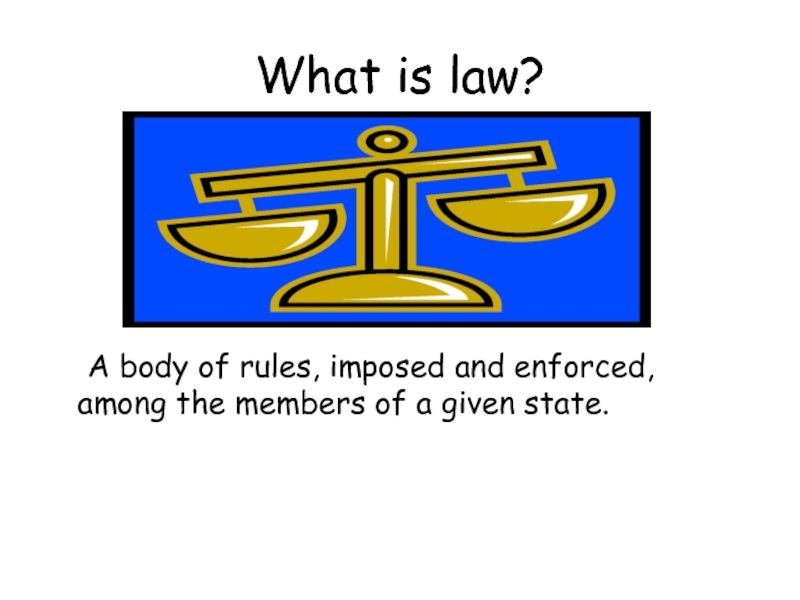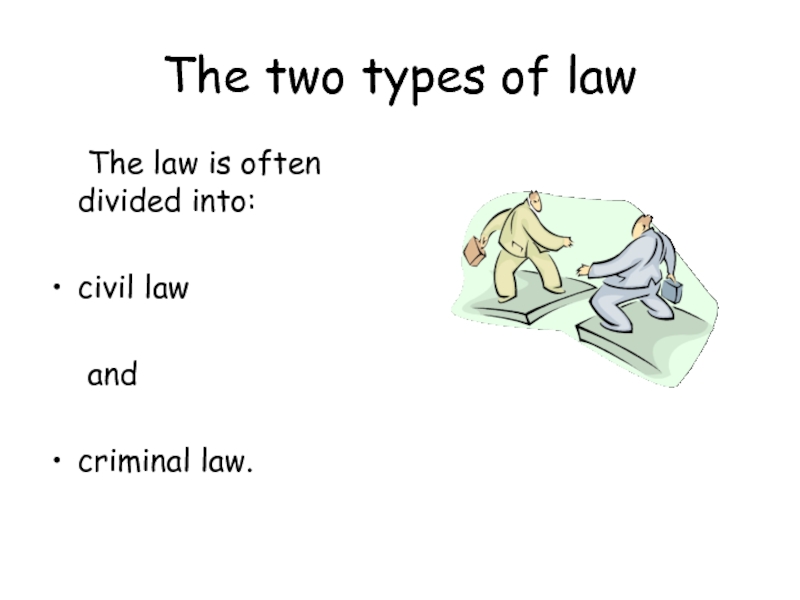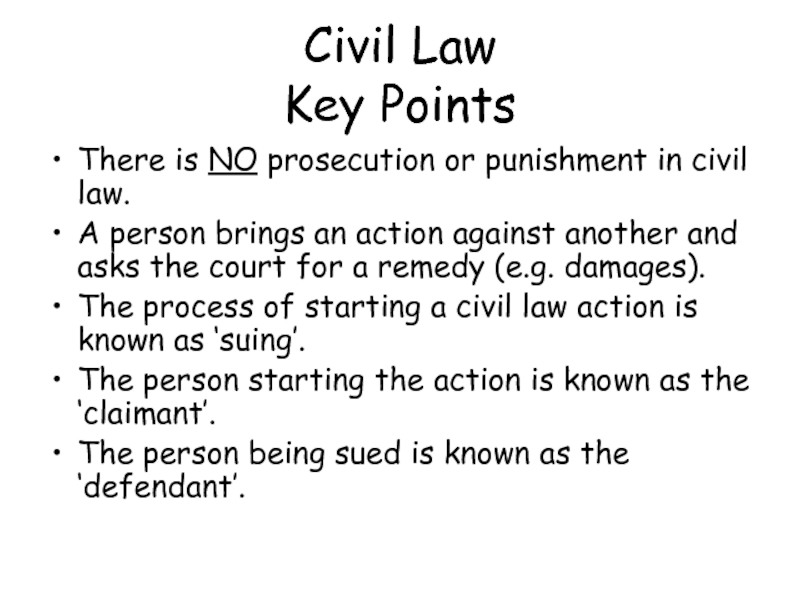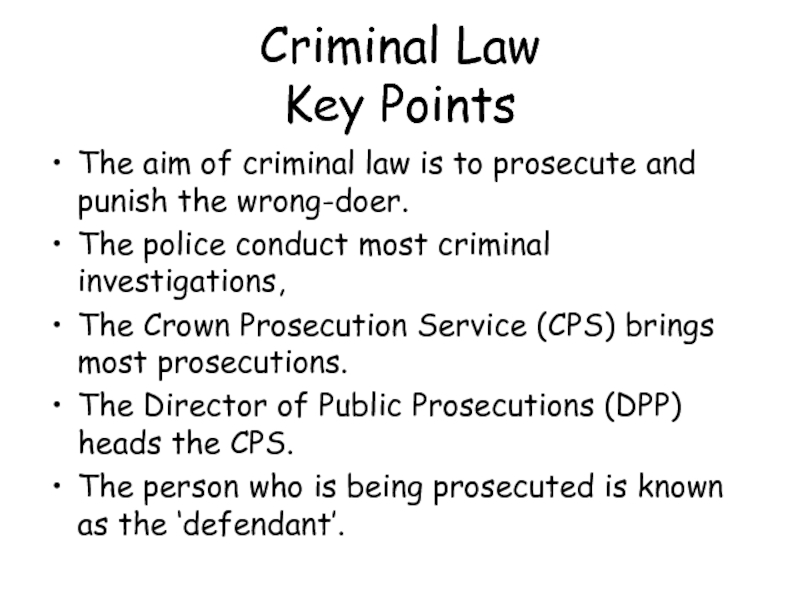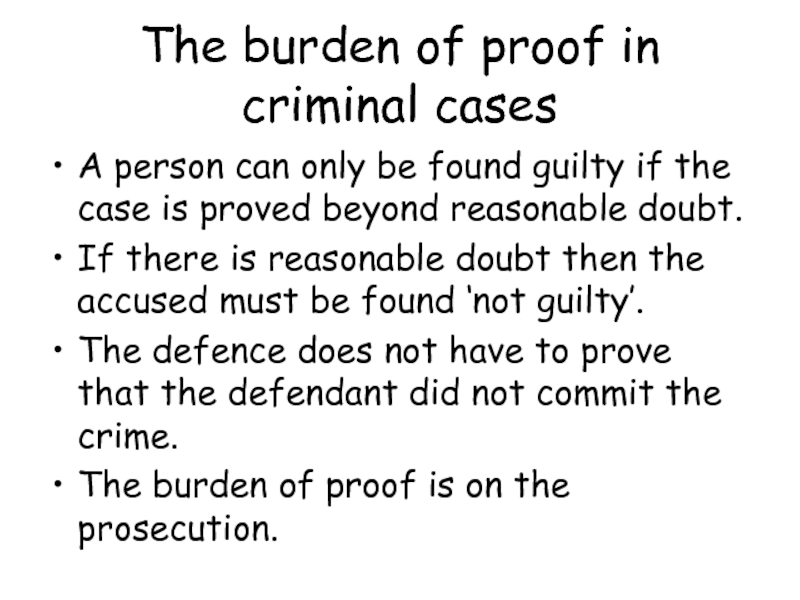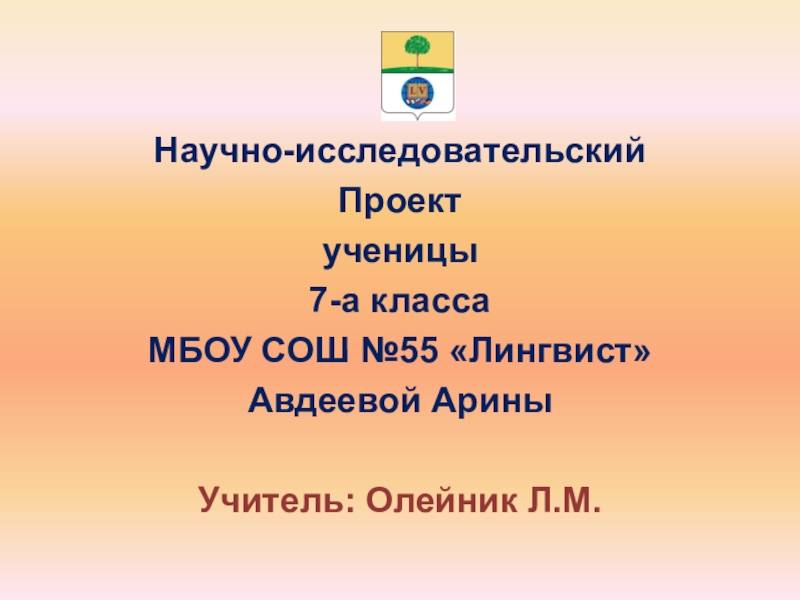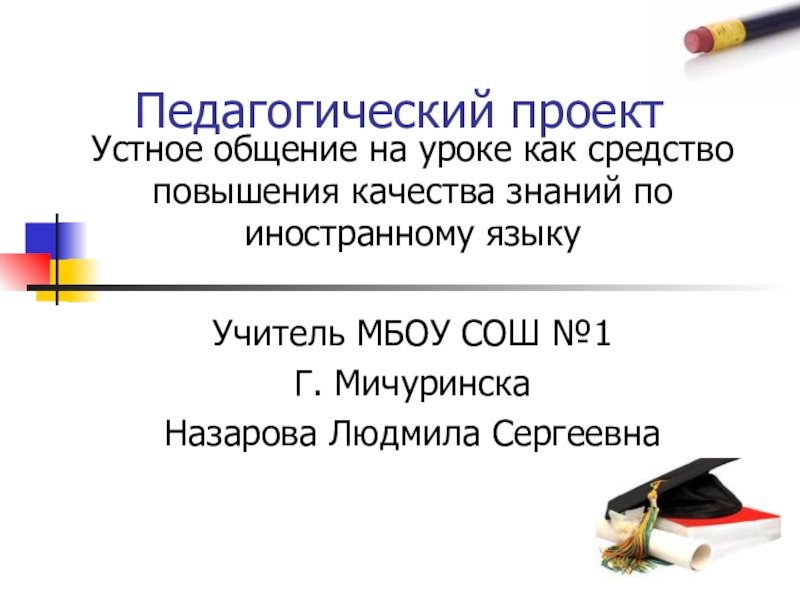Разделы презентаций
- Разное
- Английский язык
- Астрономия
- Алгебра
- Биология
- География
- Геометрия
- Детские презентации
- Информатика
- История
- Литература
- Математика
- Медицина
- Менеджмент
- Музыка
- МХК
- Немецкий язык
- ОБЖ
- Обществознание
- Окружающий мир
- Педагогика
- Русский язык
- Технология
- Физика
- Философия
- Химия
- Шаблоны, картинки для презентаций
- Экология
- Экономика
- Юриспруденция
What is law
Содержание
- 1. What is law
- 2. The two types of law The law is often divided into:civil law andcriminal law.
- 3. Civil law Civil law concerns the rights and duties that people or companies owe to each other.
- 4. Civil Law Key PointsThere is NO prosecution
- 5. Main Branches of Civil LawContract lawLaw of tortFamily lawCompany law.
- 6. Criminal Law Key PointsThe aim of criminal
- 7. The main courtsThe main criminal courts are:The
- 8. The burden of proof in criminal casesA
- 9. Criminal law Criminal law concerns behaviour that the
- 10. The burden of proof in civil casesThe
- 11. Скачать презентанцию
The two types of law The law is often divided into:civil law andcriminal law.
Слайды и текст этой презентации
Слайд 3Civil law
Civil law concerns the rights and duties that people
or companies owe to each other.
Слайд 4Civil Law
Key Points
There is NO prosecution or punishment in civil
law.
A person brings an action against another and asks the
court for a remedy (e.g. damages).The process of starting a civil law action is known as ‘suing’.
The person starting the action is known as the ‘claimant’.
The person being sued is known as the ‘defendant’.
Слайд 6Criminal Law
Key Points
The aim of criminal law is to prosecute
and punish the wrong-doer.
The police conduct most criminal investigations,
The Crown
Prosecution Service (CPS) brings most prosecutions.The Director of Public Prosecutions (DPP) heads the CPS.
The person who is being prosecuted is known as the ‘defendant’.
Слайд 7The main courts
The main criminal courts are:
The magistrates’ courts
The Crown
Court.
The main civil courts are:
The county courts
The High Court.
Слайд 8The burden of proof in criminal cases
A person can only
be found guilty if the case is proved beyond reasonable
doubt.If there is reasonable doubt then the accused must be found ‘not guilty’.
The defence does not have to prove that the defendant did not commit the crime.
The burden of proof is on the prosecution.
Слайд 9Criminal law
Criminal law concerns behaviour that the state so strongly
disapproves of that it will seek to punish the wrongdoer.
Слайд 10The burden of proof in civil cases
The burden of proof
in civil law is usually on the complainant but is
much lower than that required in criminal law.Cases are decided on the balance of probabilities
This can be thought of as tipping the scales of justice in favour of one party or a 51% target: if this is reached then the case is won.
